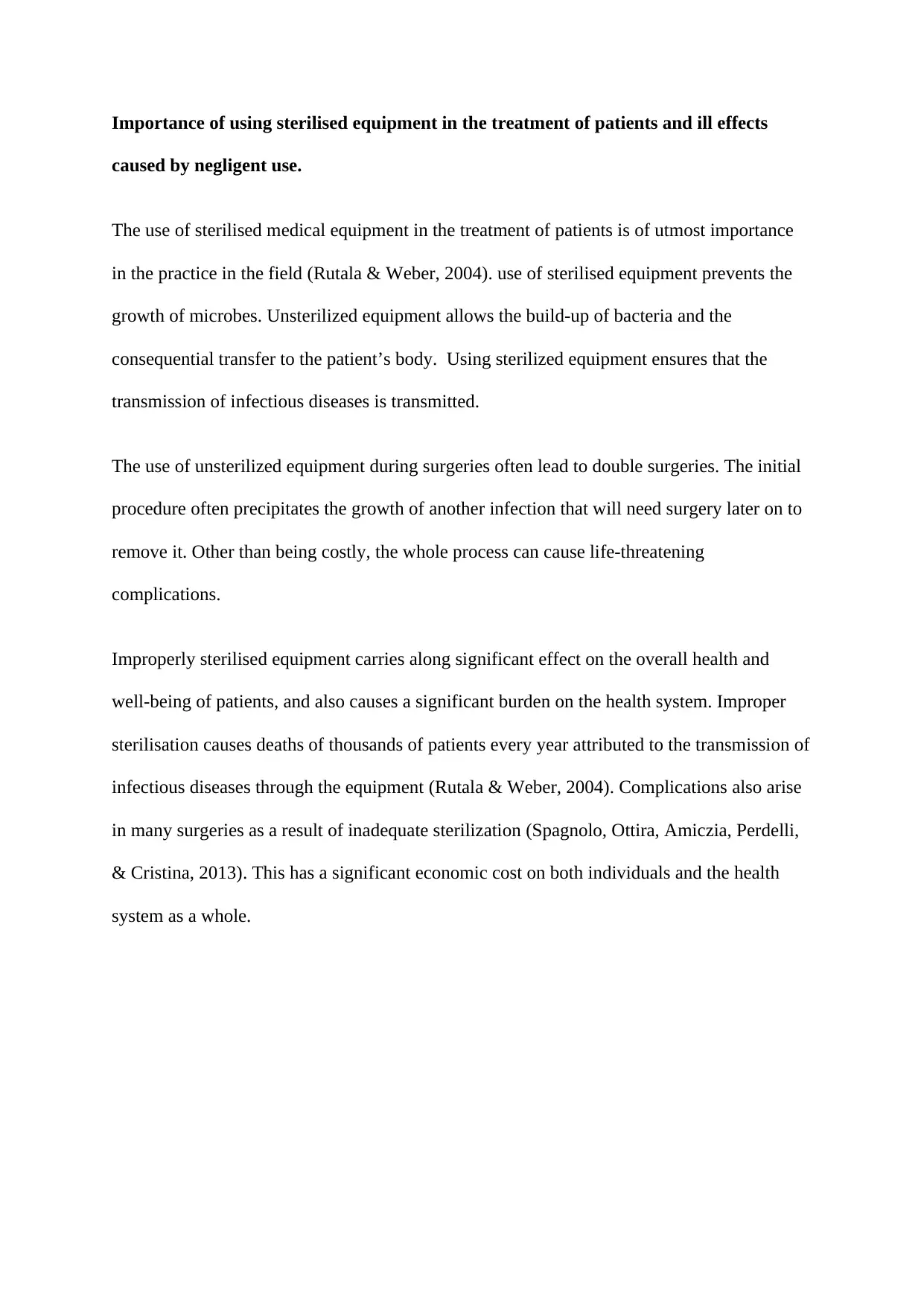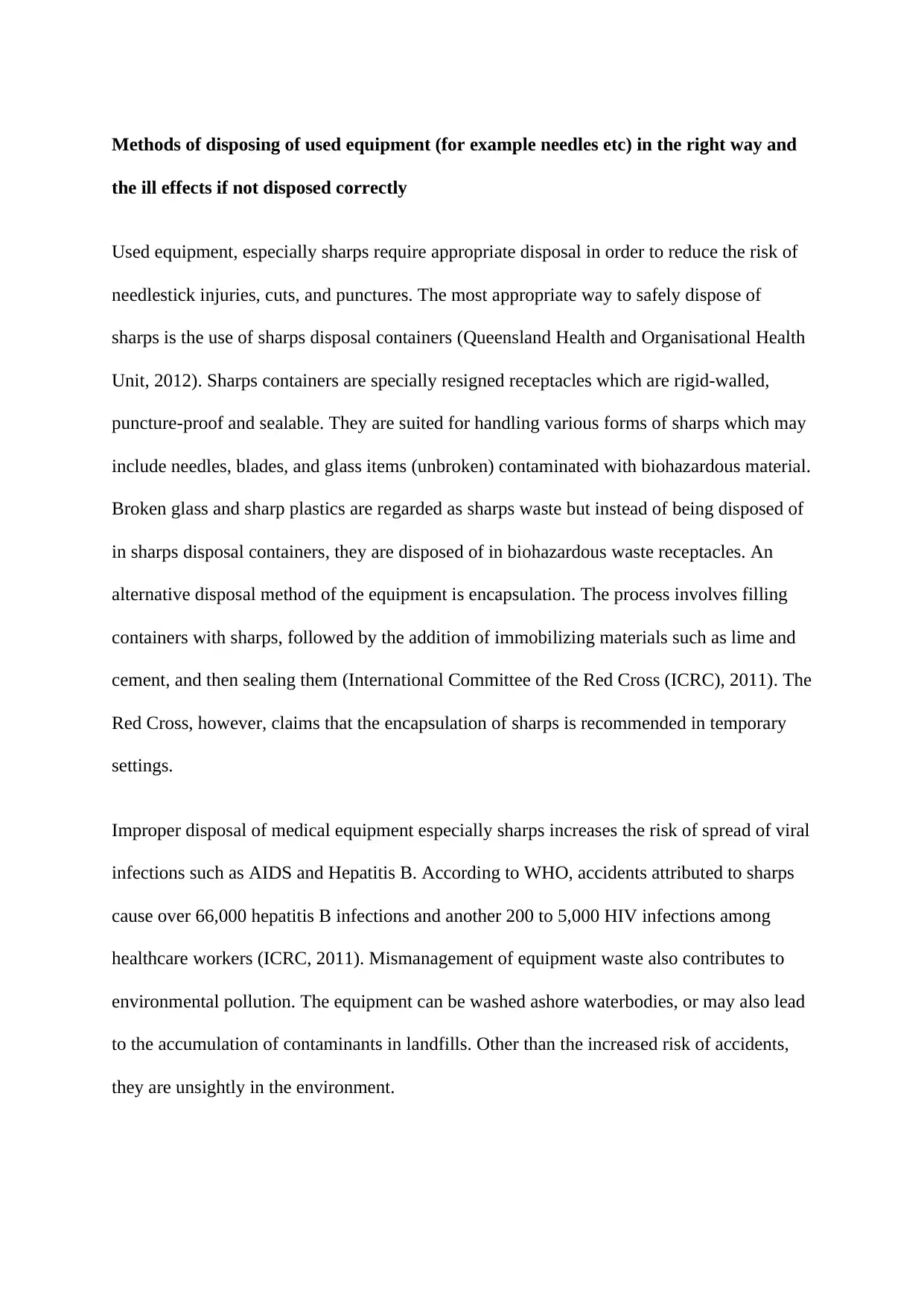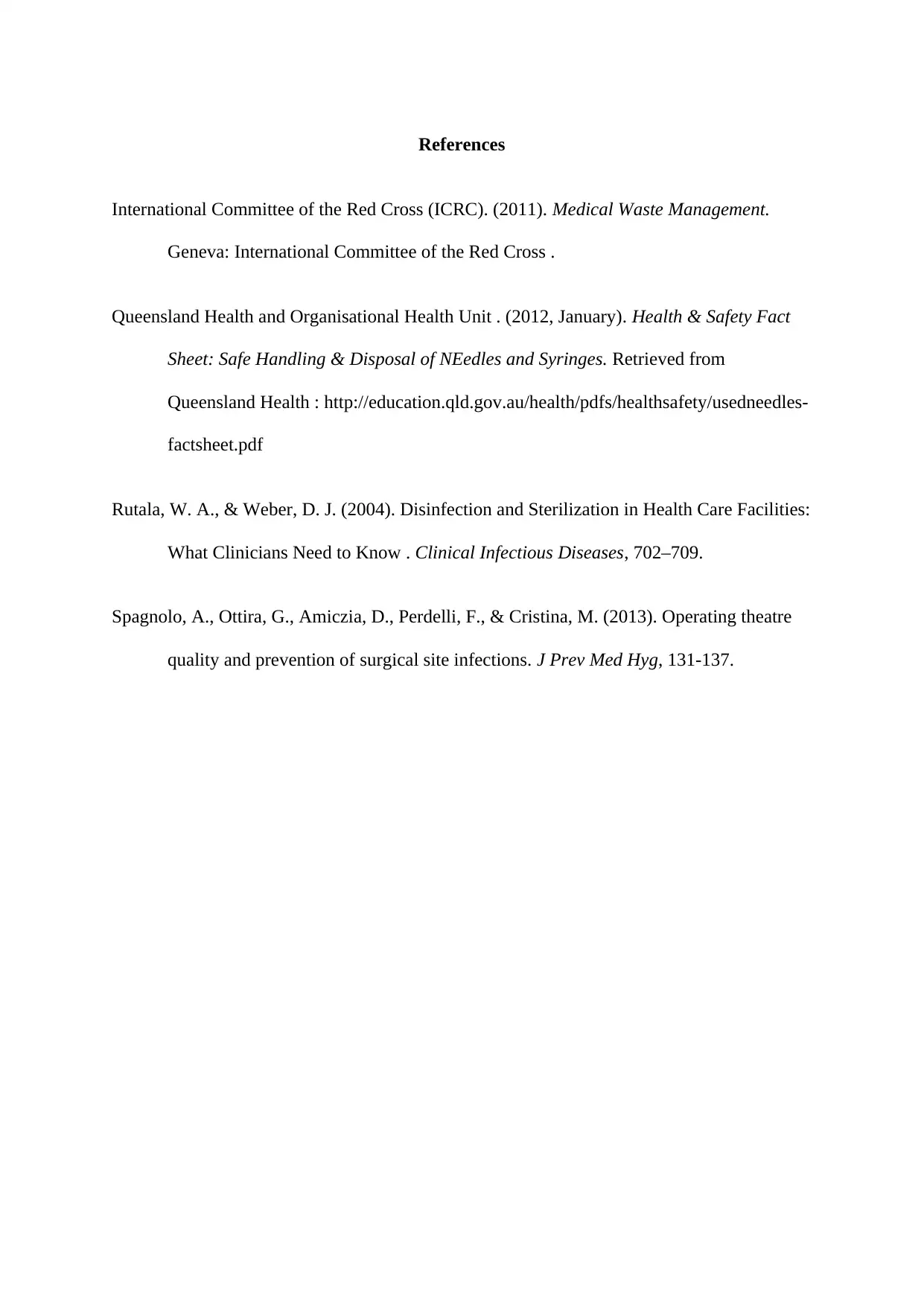The Role of Sterilized Equipment in Patient Care and Safety
VerifiedAdded on 2020/03/28
|3
|682
|110
Report
AI Summary
This report emphasizes the critical role of sterilized medical equipment in healthcare to prevent infections and ensure patient safety. It highlights the detrimental effects of using unsterilized equipment, including the spread of infectious diseases, the potential for double surgeries, and the significant economic burden on healthcare systems. The report also discusses the correct methods for disposing of used equipment, particularly sharps, to minimize the risk of needlestick injuries and environmental pollution. It stresses the importance of using sharps disposal containers and the dangers of improper disposal, which can lead to the spread of viral infections like AIDS and Hepatitis B, as well as environmental contamination. The report references key sources like the International Committee of the Red Cross (ICRC), Queensland Health, and Rutala & Weber to support its findings.
1 out of 3






![[object Object]](/_next/static/media/star-bottom.7253800d.svg)